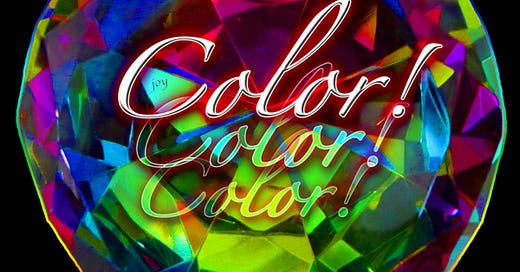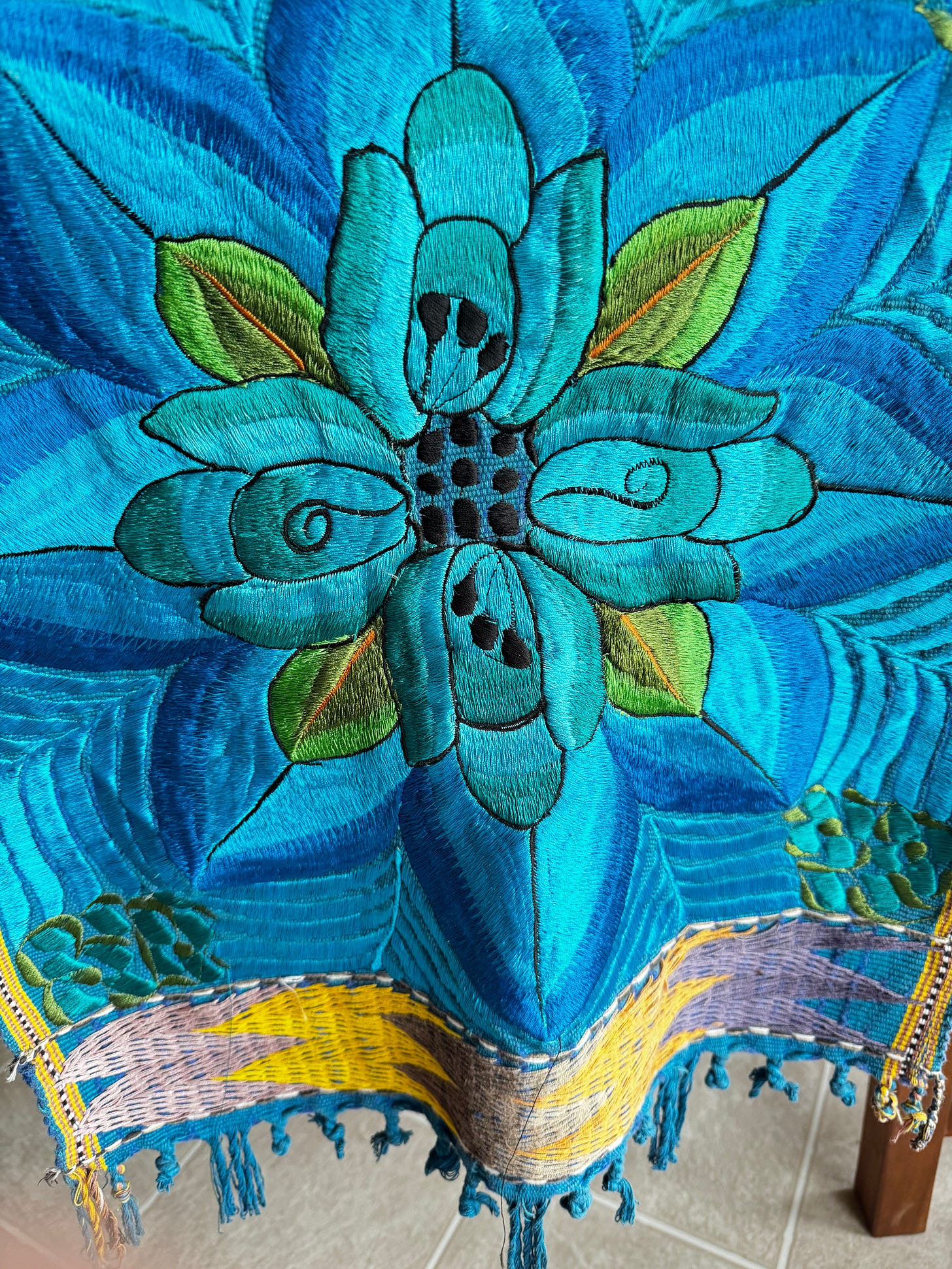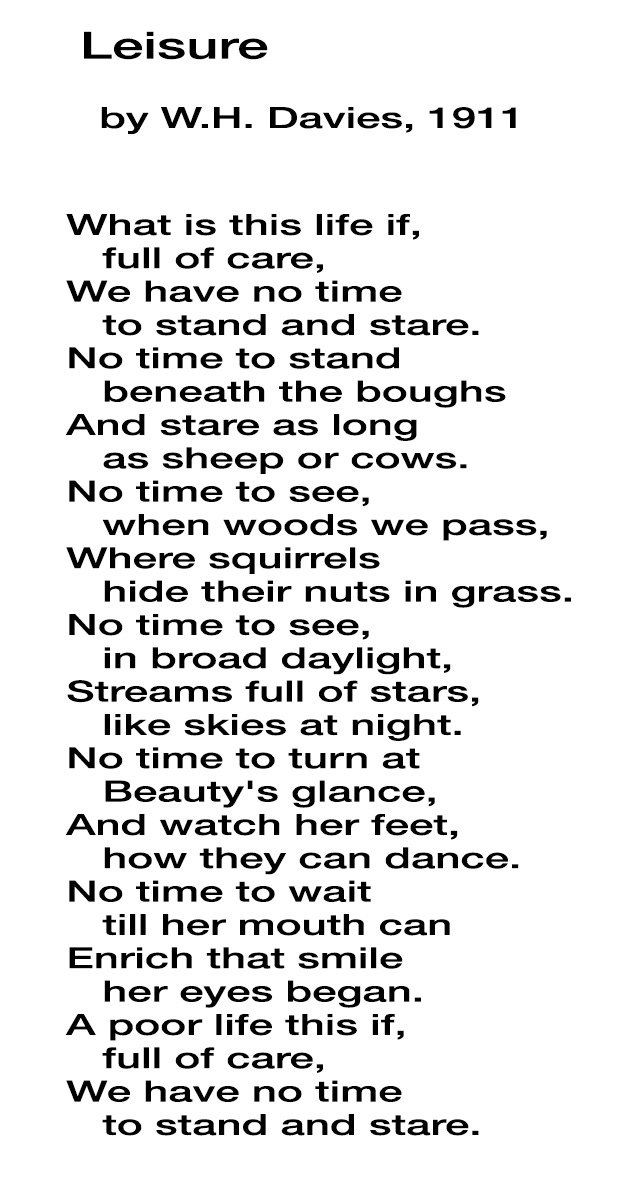Reflecting on early failures can unlock hidden treasures within
Maybe failing color theory in the second grade was a good thing
I failed color theory in the 2nd grade.
Perhaps that's why it still fascinates me or, perhaps, it’s because it was connected to my favorite aunt Wanda who was a bit weird ... at least in the opinion of my parents. For me, she was always ready to do something fun, played the piano and a vibraharp, and always had time to talk. She felt more like a big sister.
It wasn't until years later that I realized she was only ten years older than I was and had a backstory that still curls my toes.
In grade school, I walked to her house for lunch and after-school care. On one of those visits, she attempted to explain complementary colors to me. The memory is jumbled; my Aunt Wanda was magic so I badly wanted to understand what she was saying; but I didn’t/couldn’t. The feelings of failure and the words "complementary colors" stuck but everything else about that confusing experience is lost.
In the decades since then, colors have gradually revealed some of their secrets and my fascination for color wheels has grown into a small collection and a yearning to better understand the theories behind them.
Enter: fate, synchronicity, or .... ???
While rummaging through files and notes here and there looking for a subject that would pull me into this week's posts, I found a website open on my browser (image above). I'm sure I put it there although I don't remember doing it and have no idea how long it has been there. ( I suffer from too-many-open-sites syndrome).
Ta da! Subject meets approaching deadline. So let's see where this takes us ... and, thank you, Aunt Wanda, I miss you.
Before I begin ... this adventure comes from a 58-slide pdf which I am attaching, created by Greg Clayton, Associate Professor of Art & Design at Harding University in Searcy, Arkansas. Click here for file.
For some reason, it struck me as odd when I first learned that color theory has a long history. Color has always been color … yes? Maybe yes, but. Apparently the ability to see and name color has developed rather piecemeal through time and cultures. Remember the “wine dark sea”? Apparently that was more related to “dark” than a specific color. Wine is dark; the sea is dark.
Anyway, Professor Clayton takes us back in time and explores the cultural development of colors. I’m only going to share a few of his slides since you have the entire presentation to meander through. However, it has been interesting to try to clear my mind and imagine myself back in Ancient Greece trying to figure out what color is.
Actually, it’s not all that easy even now to contemplate color. I know, because I’ve been told, that color is a reaction to light. However, I’m sitting here looking at a table runner I bought in Mexico. (Shown above.) I can see the many colors. I’ve been to the markets where offering hundreds of colors. I’ve seen the threads dyed from cochineal beetles in workshops in Oaxaca. How can color not be a real, tangible thing?
So, I go back to Perplexity and ask: what is color? And, sure enough, it responds:
Color is a visual perception that allows us to differentiate objects
based on the way they reflect or emit light.
Suddenly once again, I’m that second-grader sitting at my Aunt Wanda’s table deep in brain mush. Now, it doesn’t seem all that far-fetched to think about some of our greatest thinkers contemplating such a simple-seeming concept. One of Professor Clayton’s slides makes this point when he lists scientists, philosophers, and artists who have thought deeply about the concept of color.
Here is a quote from Goethe that reflects how deeply he was thinking about color:
"As yellow is always accompanied with light, so it may be said that blue still brings a principle of darkness with it. This color has a peculiar and almost indescribable effect on the eye. As a hue it is powerful, but it is on the negative side, and in its highest purity is, as it were, a stimulating negation. Its appearance then, is a kind of contradiction between excitement and repose."
It is fascinating that cultures seem to develop color sense in the same order.
In the midst of all these thoughts about science and theories, I got swept away in waves of words …
Here’s Nina MacLauglin telling an almost-missable story in her “What Color Is the Sky?”
“Robin’s egg. Peach. Opal. Purple. Baby-hair blond as my brother’s was. Garnet. Lavender. Turmeric. Charcoal. Periwinkle. Dirt road. Yarrow. Powder. Bruise. Rice. Absinthe. Piss. Shadow. Mussel shell. Ash. Blood clot. Clementine. Pistachio. Mauve. Faun. Inner thigh. Midnight. Cantaloupe. Underblanket. Honey. Olive. Orgasm. Peppermint. Raisin. Sapphire like the wedding ring my mother wore, a thin band of tiny flat sapphires so dark it looked black, but off her finger, where always it is now, marriage done, held up in the light, deep dark blue. Heather. Smoke. Yolk. Bone. Baseball. Candle. Creamsicle. Lichen. Lilac. Bile. Black silk. Hawk eye. Camouflage. Amaranth. Lamb.”
From: Paris Review
And Rebecca Solnit reflecting on what lies beyond words:
"Sometimes at the birth and death of a day, the opal sky is no color we have words for, the gold shading into blue without the intervening green that is halfway between those colors, the fiery warm colors that are not apricot or crimson or gold, the light morphing second by second so that the sky is more shades of blue than you can count as it fades from where the sun is to the far side where other colors are happening. If you look away for a moment you miss a shade for which there will never be a term, and it is transformed into another and another. The names of the colors are sometimes cages containing what doesn't belong there, and this is often true of language generally, of the words like woman, man, child, adult, safe, song, free, true, black, white, rich, poor. We need the words, but use them best knowing they are containers forever spilling over and breaking open. Something is always beyond."
Photographer Jay Maisel in his book Light, Gesture and Color states, "Color is seductive. It changes as it interacts with other colors, it changes because of the light falling upon it, and it changes as it becomes larger in size."
And the philosophers confound me, Goethe saying "Colors are light's suffering and joy." And William Blake echoing, “Colors are the wounds of light."
The Welch poet William Henry Davies warms me with: "It was the Rainbow that gave thee birth, and left thee all her lovely hues."
And, Mark Nepo ends this meandering through color on a philosophical note, making me wonder if I’ve missed the main message of color.
"Water reflects everything it encounters. This is so commonplace that we think water is blue, when in fact it has no color.... But the water, the glorious water everywhere, has taught me that we are more than what we reflect or love. This is the work of compassion: to embrace everything clearly without imposing who we are and without losing who we are."
From: The Book of Awakening: Having the Life You Want by Being Present to the Life You Have
The world of art has been an unexpected life gift and I often wonder if my Aunt Wanda had not planted that seed of confusion if it would have happened at all. Thee is no way to know, of course, but I like to think they’re related.
While this has gone on long enough, I would feel remiss if I didn’t share this newly found poem from William Henry Davies which seems to express so much of what so many of us feel these days:
What does color mean to you and your life?
I would love to hear your thoughts and/or experiences with color. What was your first favorite color? Mine was turquoise and it’s still near the top, maybe with a slight shift to teal … but, then there’s purple … and lime green … and that vibrant orange flaunted by flowers … … …
Beyond color there are colorful people. Here’s one of the most colorful I’ve written about: Marta Becket, the dancer who created her own stage … and her own audience.
887 … 85/67/85 … 36
A reminder about the business aspect of this adventure:
Subscribing brings you free twice-weekly posts delivered to your email inbox. If you find that my posts bring you stories and ideas that inspire or enlighten you and want to chip in the annual paid subscription amount to support my work … thank you buckets! (Plus you will receive my monthly flipbooks (small digital magazines) as a special thank you.)
Or … you could also “buy me a coffee” when a post delights you.
However, whether you subscribe or buy me a coffee or not, I’d love to hear from you and I answer every comment and question … (one of the benefits of not being an overloaded STAR. ;-)











I liked this topic because it is absolutely new to me. I need the Cliff Notes. Let's talk about it sometime.
It can be hard for some people to know what colours go together, my mum was one such person , me for the most get it right I hope